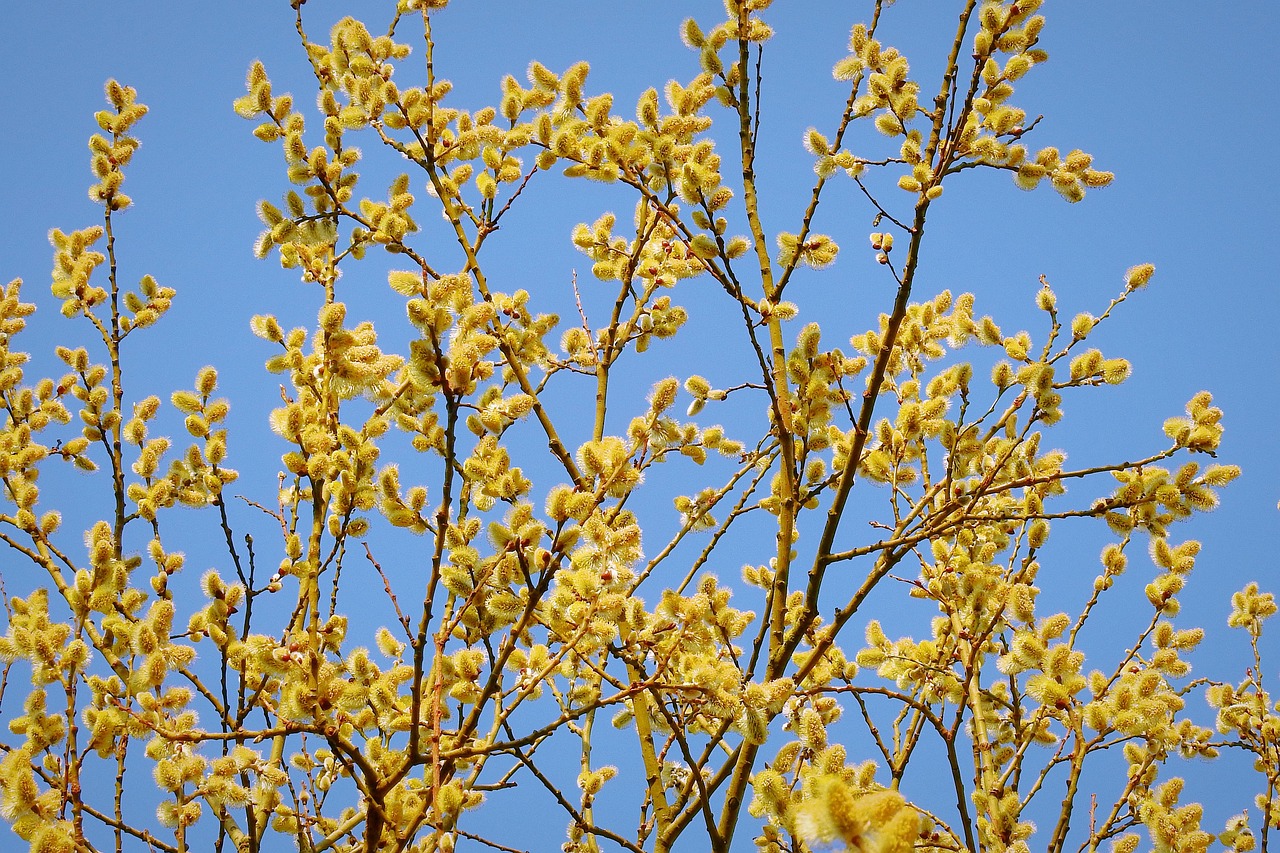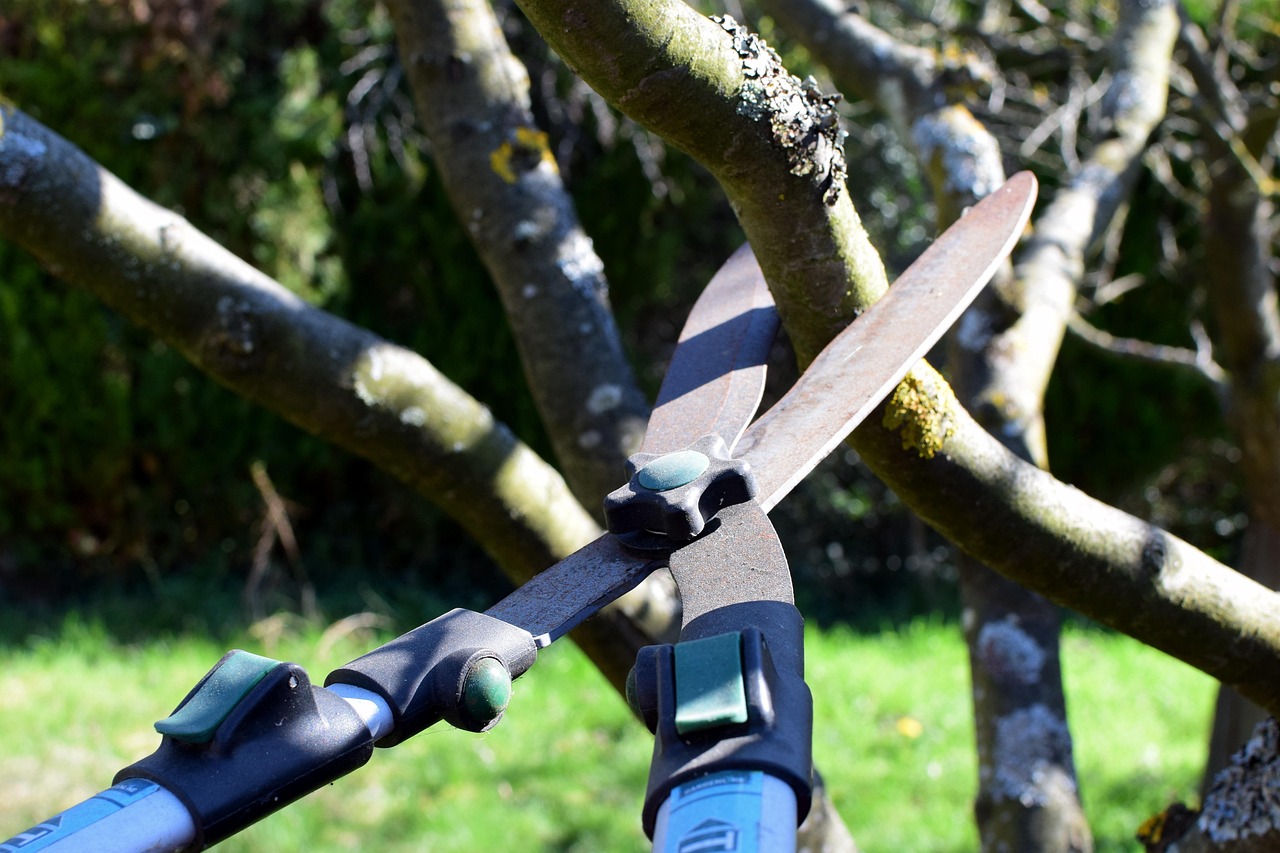Pruning willow trees is essential for promoting healthier growth. It helps in shaping the tree, removing dead or diseased branches, and encouraging new growth. Proper timing and techniques are crucial to ensure the tree remains vigorous and aesthetically pleasing.
Willow trees are known for their graceful, sweeping branches and lush foliage. They are often found near water sources, as they thrive in moist conditions. While these trees are relatively low maintenance, regular pruning is necessary to keep them healthy and thriving. Pruning not only enhances their appearance but also improves their structural integrity and overall health.

Understanding when and how to prune is vital for the longevity of your willow tree. Pruning at the wrong time can lead to stress or damage. Generally, the best time to prune willow trees is during late winter or early spring before new growth begins. This timing allows the tree to heal quickly and promotes robust growth in the upcoming season.
Benefits of Pruning Willow Trees
Pruning offers several benefits that are crucial for the health and aesthetics of willow trees. Some of these advantages include:
- Encourages New Growth: Regular pruning stimulates new shoots and enhances leaf production.
- Improves Air Circulation: Removing dense branches allows better air flow, reducing the risk of fungal diseases.
- Enhances Aesthetics: Shaping the tree can create a more attractive appearance that fits well within your landscape.
- Removes Dead or Diseased Wood: Clearing away unhealthy branches prevents the spread of pests and diseases.
- Increases Sunlight Penetration: Pruning opens up the canopy, allowing more sunlight to reach lower branches and the ground.
To effectively prune your willow tree, it’s important to follow specific steps that ensure a healthy outcome. Here are some key steps to consider:

Essential Pruning Steps for Willow Trees
Before you start pruning, gather the necessary tools. You will need sharp pruning shears, loppers, and possibly a saw for larger branches. It’s vital to use clean tools to prevent any disease transmission. Follow these steps for effective pruning:
- Assess the Tree: Take a moment to evaluate your willow tree’s overall health. Look for any signs of disease or damage.
- Identify Dead or Diseased Branches: Focus on removing any branches that appear dead, diseased, or infested with pests.
- Remove Crossing Branches: Eliminate branches that are crossing each other as they can cause wounds and create entry points for diseases.
- Shape the Tree: Trim back overly long branches to maintain a balanced shape. Aim for a natural appearance that complements your landscape.
- Cut at an Angle: When cutting branches, do so at a 45-degree angle about 1/4 inch above a bud. This encourages healthy growth.
- Avoid Over-Pruning: Never remove more than 30% of the tree’s canopy in one season to prevent stress.
The timing of your pruning session is just as critical as the technique you use. Late winter or early spring is ideal because willows are still dormant. This allows you to make cuts without risking sap loss. It also gives the tree ample time to recover before the growing season begins.
This table summarizes key information about willow tree pruning:

| Pruning Aspect | Recommended Timing | Tools Required |
|---|---|---|
| General Pruning | Late Winter/Early Spring | Pruning Shears, Loppers, Saw |
| Removing Dead/Diseased Branches | Year-Round (as needed) | Pruning Shears |
| Shaping the Tree | Late Winter/Early Spring | Loppers, Saw |
By following these guidelines, you can ensure your willow tree remains healthy and beautiful. Remember that each tree may have its unique needs based on its environment and health status. Regular monitoring will help you make informed decisions about pruning schedules and techniques.
Your efforts in maintaining your willow tree will pay off through vibrant leaves and sturdy branches. Healthy willow trees not only enhance your landscape but also contribute positively to local ecosystems by supporting wildlife and improving air quality.
Engaging in proper pruning techniques will foster a long-lasting relationship with your willow tree, allowing it to flourish for years to come.

Understanding Willow Tree Growth Patterns
To effectively prune willow trees, it is essential to understand their growth patterns. Willows are fast-growing trees, often adding several feet of height each year. Their growth cycle is influenced by environmental factors, and recognizing these can help you time your pruning and care more effectively.
There are several types of willow trees, including the Weeping Willow and the Black Willow. Each species exhibits different growth habits and characteristics. Here are some general growth traits:
- Fast Growth: Willows can grow up to 10-15 feet per year under optimal conditions.
- Flexible Branches: Their branches are pliable, which allows them to bend without breaking.
- Root System: Willows have extensive root systems that seek out water, which can sometimes lead them to invade nearby pipes or foundations.
- Seasonal Growth: New growth generally occurs in the spring, with periods of rapid growth followed by a slower phase in late summer.
Tools Needed for Pruning
Having the right tools is crucial for successful pruning. Using sharp and clean equipment ensures clean cuts, which promote faster healing. Below is a list of essential tools for pruning willow trees:
- Pruning Shears: Ideal for cutting small branches and stems.
- Loppers: Useful for branches that are thicker than those handled by shears.
- Saw: A handsaw or pole saw may be necessary for larger limbs.
- Gloves: Protect your hands from splinters and sharp edges.
- Ladder: Ensure safety when reaching higher branches.
- Disinfectant: Clean your tools before and after use to prevent disease spread.
Pruning Techniques to Consider
Different pruning techniques can be applied depending on the goals of your pruning session. Here are some techniques specifically beneficial for willow trees:
- Crown Thinning: This involves selectively removing branches to increase light penetration and improve air circulation throughout the tree’s canopy.
- Crown Raising: Removing lower branches allows for more clearance and can enhance the tree’s overall structure.
- Crown Reduction: This method reduces the height of the tree while maintaining its natural shape. It is accomplished by shortening branches back to a lateral branch or bud.
Each technique serves a purpose, and understanding when to use them will help maintain the health and beauty of your willow tree. Always assess the tree’s condition before deciding on a technique.
Signs That Your Willow Needs Pruning
Recognizing when a willow tree requires pruning is vital for its health. Here are common signs to watch for:
- Dead Branches: Look for branches that have no leaves or appear brittle and lifeless.
- Pests or Disease: If you notice signs of infestation or disease, such as discolored leaves or unusual growths, it’s time to prune.
- Crowded Canopy: If branches are crossing or crowded, thinning them out will improve overall health.
- Unnatural Shape: If the tree appears unbalanced or lopsided, it may need shaping through pruning.
The Role of Seasonal Changes
The changing seasons have a significant impact on when and how you should prune willow trees. Here’s how each season affects pruning decisions:
| Season | Considerations | Recommended Actions |
|---|---|---|
| Spring | New growth begins; sap flow increases. | Avoid heavy pruning; focus on removing dead wood. |
| Summer | Active growth period; best for shaping. | Consider light pruning to control shape and size. |
| Fall | Prepare for dormancy; leaves begin to drop. | Light maintenance pruning is acceptable before winter. |
| Winter | Dormant season; best time for heavy pruning. | Prune to remove unhealthy branches and shape the tree. |
By understanding these seasonal influences, you can optimize your pruning efforts. Adhering to seasonal guidelines helps minimize stress on the tree while promoting healthy growth in the following seasons.
Caring for your willow tree through regular monitoring and appropriate pruning will ensure it thrives. With the right knowledge and tools at your disposal, you can nurture your willow tree into a magnificent addition to your landscape.
Common Mistakes to Avoid When Pruning Willows
While pruning is beneficial for willow trees, certain mistakes can hinder their growth and health. Understanding these common pitfalls will help you achieve the best results when caring for your tree. Here are some mistakes to watch out for:
- Pruning at the Wrong Time: As discussed, timing is crucial. Pruning during the wrong season can lead to excessive sap loss and weaken the tree.
- Over-Pruning: Removing too much foliage can stress the tree. Aim to prune no more than 30% of the canopy in one season.
- Using Dull Tools: Dull tools can crush branches instead of making clean cuts, which increases the risk of disease.
- Ignoring Tree Shape: Pruning without considering the natural shape of the tree can result in an unbalanced appearance.
- Leaving Stubs: Cutting branches too short or leaving stubs can lead to decay and disease. Always cut back to a bud or lateral branch.
Post-Pruning Care for Willow Trees
After pruning, it’s important to provide appropriate care to help your willow tree recover and thrive. Here are some essential post-pruning practices:
- Watering: Ensure the tree receives adequate water, especially during dry spells. Newly pruned trees may require more moisture to support regrowth.
- Mulching: Apply a layer of mulch around the base of the tree. Mulch helps retain soil moisture and suppresses weeds.
- Fertilizing: Consider applying a balanced fertilizer to encourage new growth. Follow the manufacturer’s recommendations for application rates.
- Monitoring for Pests: Keep an eye out for signs of pests or diseases after pruning. Early detection can prevent more serious issues.
- Avoiding Stress: Limit any additional stressors, such as construction or heavy foot traffic near the tree, to support its recovery.
Seasonal Pruning Strategies
Each season presents unique opportunities for pruning willow trees. Tailoring your strategies to align with seasonal changes can enhance growth and health. Here’s a breakdown of seasonal pruning strategies:
Spring Pruning
Spring is a time of renewal and growth. During this season, focus on:
- Removing Dead Wood: As buds begin to open, it’s easier to identify dead or diseased branches.
- Assessing New Growth: Evaluate how much new growth has occurred and determine if additional pruning is necessary.
Summer Pruning
In summer, willows are actively growing. Pruning during this time is best suited for shaping:
- Shaping the Canopy: Trim back overly long branches to maintain a balanced shape and encourage bushier growth.
- Thinning Crowded Areas: Thin out crowded areas to improve sunlight penetration and air circulation within the canopy.
Fall Pruning
As leaves begin to fall, preparing your willow for winter is essential:
- Light Maintenance: Conduct light maintenance pruning to remove any remaining weak or damaged branches before winter dormancy.
- Preparing for Dormancy: Ensure that your tree is healthy going into winter by addressing any lingering issues.
Winter Pruning
Winter is when willows go dormant, making it ideal for heavier pruning:
- Major Structural Changes: This is the best time to make significant cuts that can reshape the tree or remove large dead branches.
- Avoiding Stress: Since the tree is dormant, it will be less stressed by major pruning during this season.
Pest and Disease Management
Pests and diseases can pose significant threats to willow trees. Being proactive in managing these issues is crucial for maintaining tree health. Here are common pests and diseases affecting willows and how to manage them:
| Pest/Disease | Description | Management Strategies |
|---|---|---|
| Willow Leaf Beetle | A small beetle that feeds on willow leaves, causing discoloration and leaf drop. | Use insecticidal soap or neem oil; encourage beneficial insects. |
| Canker Diseases | Fungal infections that cause lesions on branches, leading to dieback. | Prune out affected branches; ensure proper air circulation. |
| Powdery Mildew | A fungal disease that appears as a white powdery substance on leaves. | Avoid overhead watering; use fungicides if severe. |
| Scale Insects | Tiny pests that attach to stems and leaves, sucking sap and weakening plants. | Treat with horticultural oil or insecticidal soap; remove manually if possible. |
This knowledge allows you to stay vigilant against potential threats to your willow tree’s health. Regularly inspect your tree for any signs of pests or diseases and take appropriate action if needed.
The care and attention you give to your willow tree through proper pruning and management will ensure it remains a vibrant part of your landscape for many years. Understanding its needs and responding accordingly will lead to a flourishing environment for both the tree and its surroundings.
Advanced Pruning Techniques for Willow Trees
As you become more experienced in pruning willow trees, you may want to explore advanced techniques that can further enhance their health and appearance. These methods require a deeper understanding of tree biology and growth patterns but can yield impressive results.
Espalier Pruning
Espalier is a technique that involves training a tree to grow flat against a wall or trellis. This method can create stunning visual effects while maximizing space in smaller gardens. To successfully espalier a willow tree:
- Choose the Right Variety: Some willow species are better suited for espalier than others. Consider varieties like the Salix babylonica for its flexibility.
- Start Early: Begin training when the tree is young, as younger branches are more pliable.
- Use Support Structures: Install a trellis or wire framework to guide the branches into the desired shape.
- Regular Maintenance: Constantly monitor growth and make adjustments regularly to maintain the shape.
Pollarding
Pollarding is an extreme form of pruning that involves cutting back the branches to a specific height each year. This technique encourages dense growth and is often used for willows in urban settings to control size and promote bushiness.
- Timing the Cut: Pollarding should be done in late winter or early spring before new growth starts.
- Uniform Cuts: Make uniform cuts at the same height each year to encourage even growth.
- Monitor Health: Regularly check for signs of stress, as this method can be taxing on the tree if not managed properly.
Environmental Considerations
When caring for willow trees, it’s essential to consider their environmental needs. Willows thrive in moist soils and benefit greatly from proper placement within your landscape. Here are some key factors to consider:
- Soil Quality: Willows prefer fertile, well-draining soil. Conduct soil tests to ensure optimal nutrient levels.
- Sunlight Exposure: Full sun is ideal for willow trees. Ensure they are planted in areas that receive at least six hours of direct sunlight each day.
- Watering Needs: While willows are water-loving trees, they still require proper drainage. Avoid waterlogging by planting them in well-draining areas.
Caring for Young Willow Trees
Younger willow trees require special attention to ensure healthy growth. Here are some tips for caring for young willows:
- Regular Watering: Newly planted willows should be watered frequently until established. Keep the soil consistently moist but not soggy.
- Staking Young Trees: If your young willow is tall, consider staking it to provide support against wind and keep it upright.
- Fertilization: Apply a balanced fertilizer in early spring to promote vigorous growth during the growing season.
- Protection from Pests: Young trees are more susceptible to pests. Use organic pest control methods to protect them without harming the environment.
The Importance of Community and Education
Your local community can be an invaluable resource for learning about willow tree care. Consider joining local gardening groups or online forums where you can share experiences and gather knowledge from other enthusiasts. Workshops and classes offered by local horticultural societies can also enhance your skills.
Additionally, many educational resources are available online, including videos, articles, and webinars focused on tree care. Utilizing these resources can broaden your understanding and help you make informed decisions about pruning and maintaining your willow trees.
Conclusion
Caring for willow trees through proper pruning and management is a rewarding endeavor that enhances both their beauty and health. By understanding the specific needs of your willow, including seasonal care, pest management, and advanced pruning techniques, you can create a thriving environment for them to flourish.
The journey of nurturing your willow trees involves learning and adapting your methods over time. Remember that every tree is unique, and what works for one may not be suitable for another. Your commitment to regular monitoring and maintenance will pay off with vibrant growth and stunning foliage that beautifies your landscape.
By applying the knowledge shared in this article, you will be well-equipped to ensure that your willow trees remain healthy and resilient, contributing positively to your garden and the surrounding ecosystem for years to come.
